In my efforts to get my two kids excited for sailing, I have taken the next step. With GEKKO now in the water, the pleasant anticipation of the boys is growing by the day. The strategy to have them find a name for the boat was ingenious, I shall say, as it helps much to foster identification with “their” new boat. Now, before we go out to actually sail, it is absolutely necessary to train the kids so that they can comply with basic safety rules. First and foremost, that is wearing a life jacket.
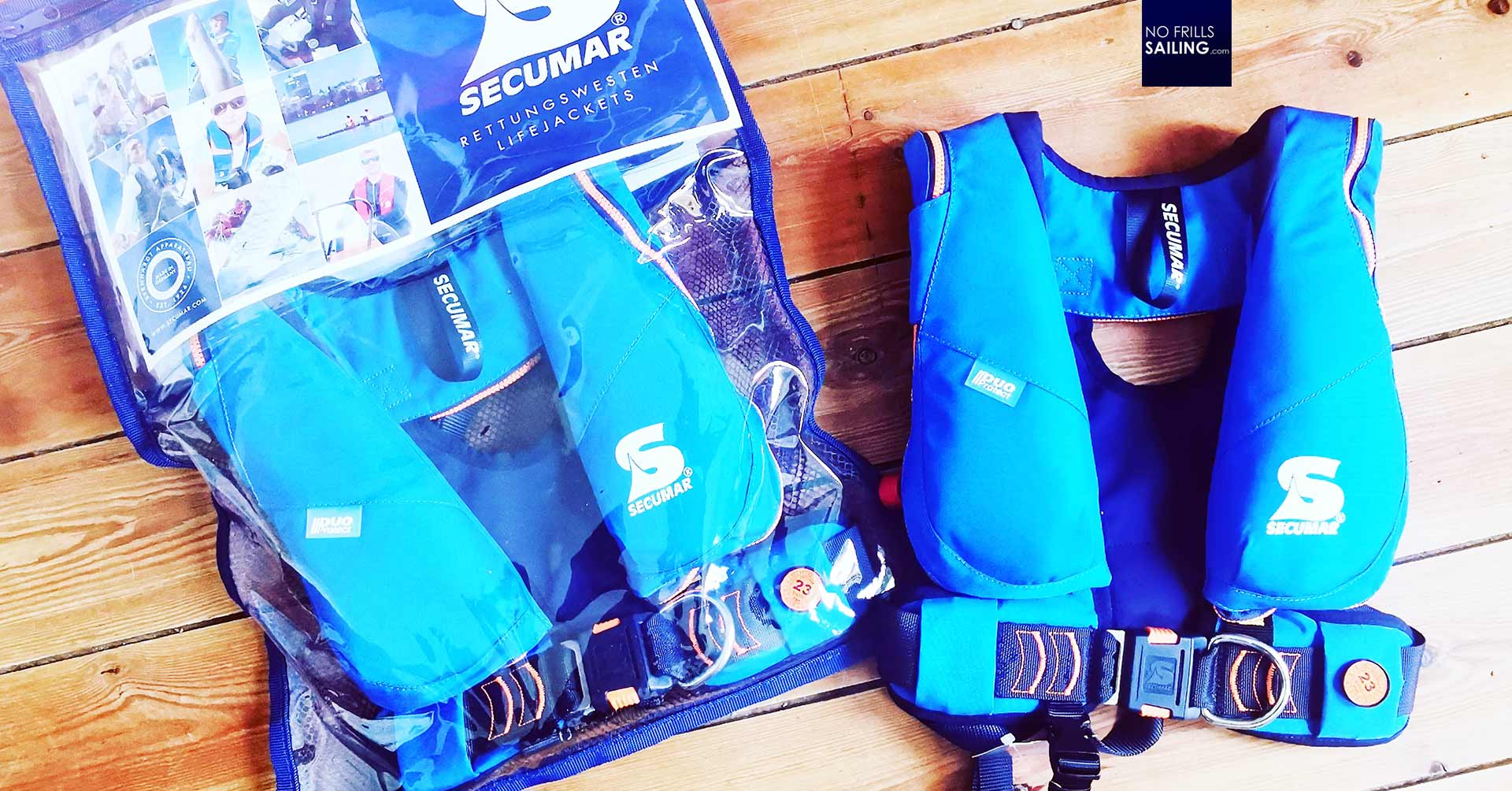
Once bitten – twice shine: As you may remember faintly, my oldest son had his MOB-event exactly at the first day on our delivery-trip after we bought OLIVIA. That was kind of an awakening and very traumatic for us all, leading me to visit Germany´s oldest and I shall say at least Europe´s leading manufacturer of life jackets, Secumar (you might read the article here). As I wear Secumar life jackets as well, I simply bought high quality automatic vests for my kids too.
Why Secumar?
This company does not just simply buy cheap made jackets on the world market and brands them, they are producing right here, near Hamburg. They also have a long tradition of working together with workshops for handicapped people and deep roots in the local community of Hamburg. I was deeply impressed with the history of Secumar and also their commitment to sailor´s safety as they invited me to check the different life jackets with a dummy myself.
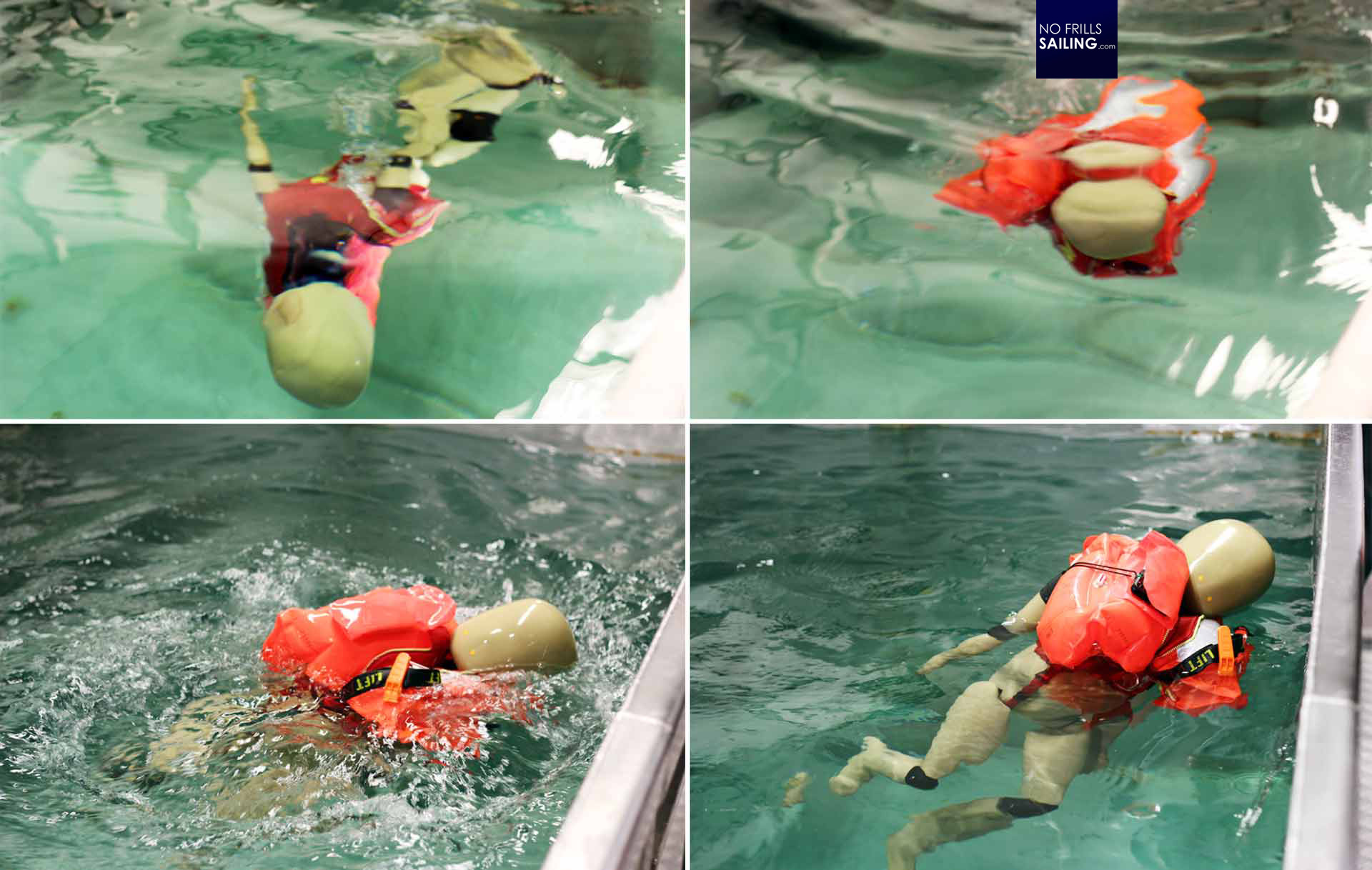
The life automatic jackets for children made by Secumar also feature their so-called “Duo Protect” technology, which is basically a double layered inflatable floating body. Because of the fact that kids often play around with their jackets on, punctures can occur which often remain unnoticed. In an event of a MOB this puncture would cause the inflated body to lose its buoyancy. With “Duo Protect” this cannot happen: As the body inflated, both layers are shifted against each other, sealing off potential punctures. Good to know …
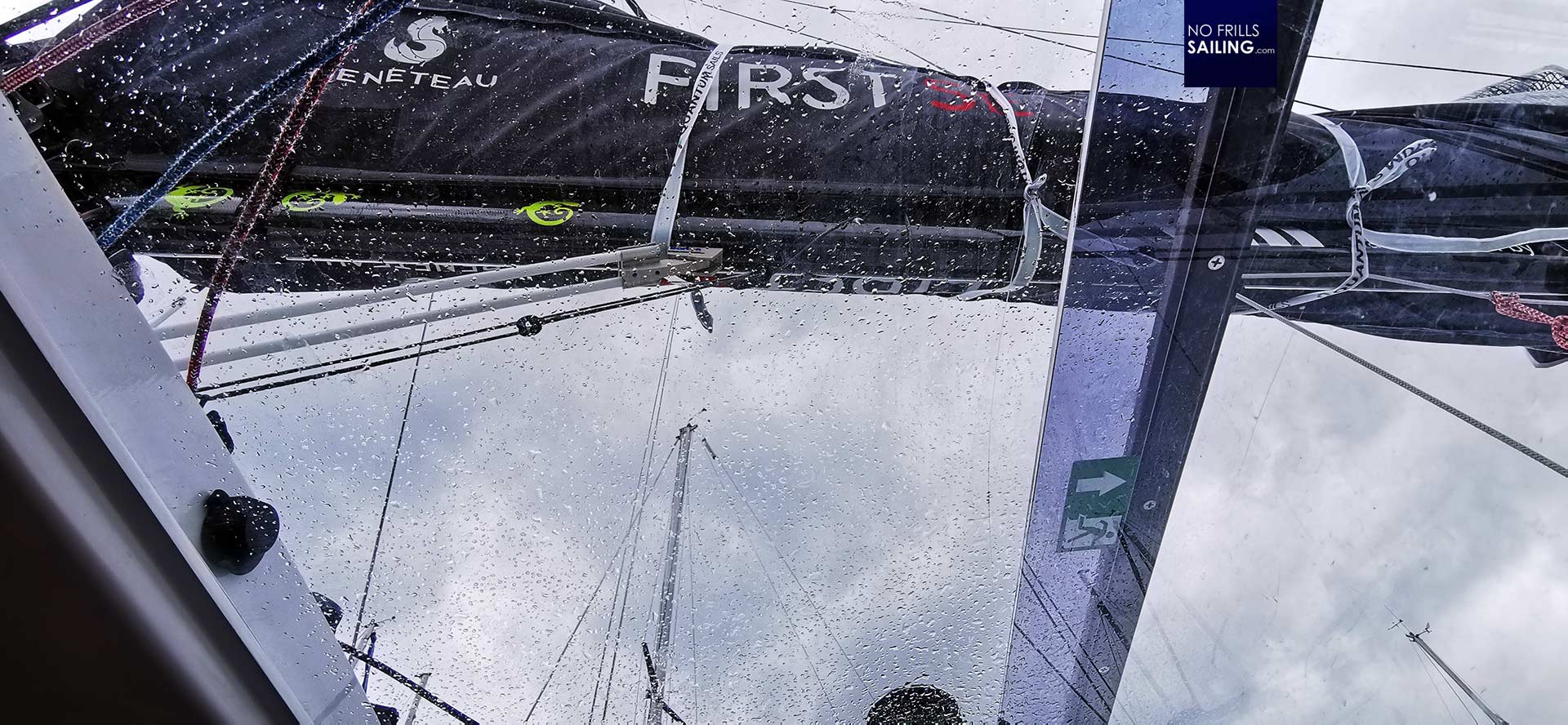
We arrived at the boat early in the morning. Late in May it should have been a warm and sunny day, nevertheless, this year´s summer tends to be a late arrival: It was showering, temps around 12 degrees Celsius and a strong breeze. Nevertheless, I found it being a perfect setting for my first kid´s safety briefing and intense learning session aboard GEKKO with my kids. Let´s start.
Making Kids aware of Safety Issues aboard a Sailboat
I sat down with the boys in the cockpit and began to ask questions: “What do you think is best for preventing to fall overboard?” Big eyes. Long thoughts. My oldest started: “I know: One hand fort he ship!” Yeah, that was a good one! Next? Any ideas? My small one replied: “Wearing a vest?” Yes, exactly – good boy! I went down, opened one of the boxes and took out the brand new life jackets: The eyes grew even bigger: “These are your life jackets!” Cheering kids, like Christmas.
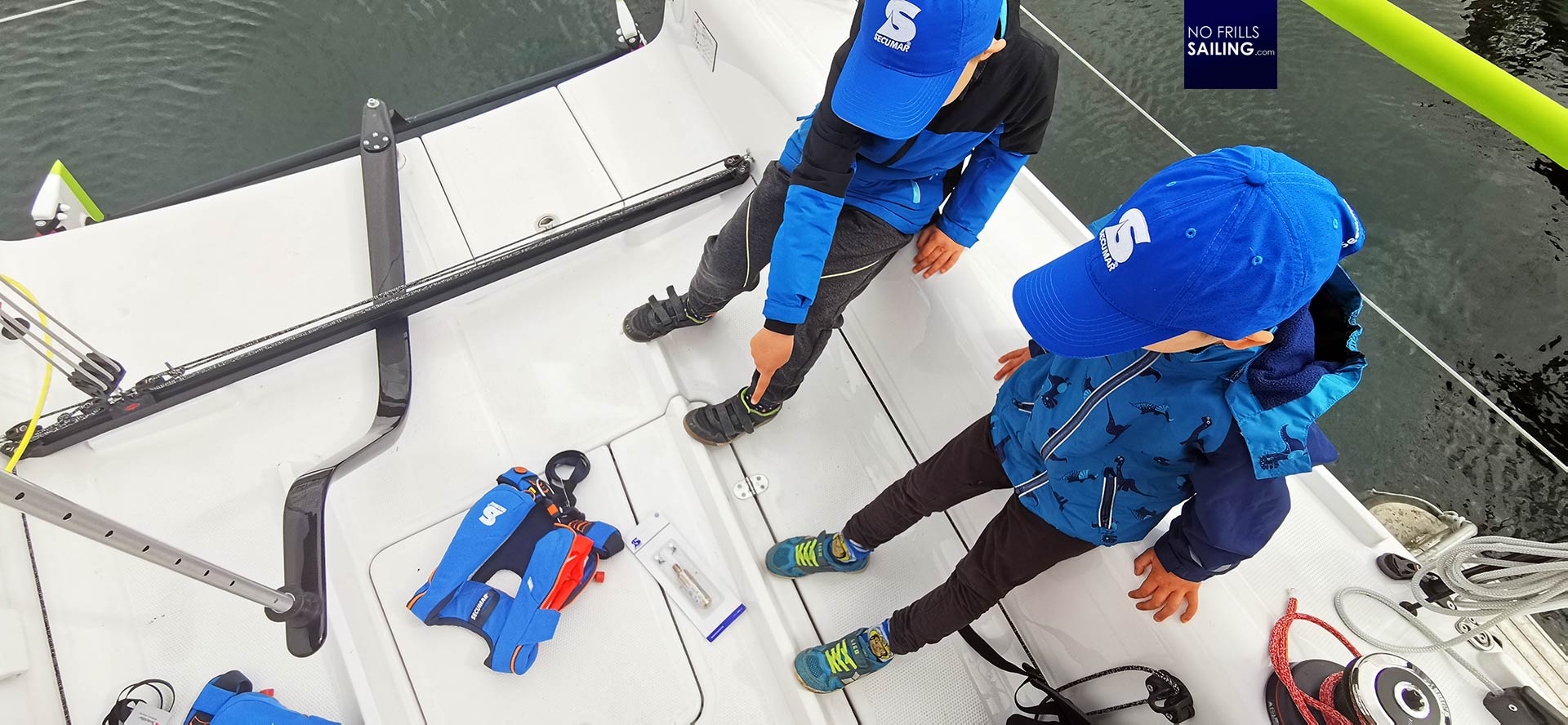
I took one of the life jackets, put it into the cockpit´s flooring and kneeled down. “Do you know how this works?”, I asked. My older son pointed toward the spare CO2-cartrige. He already knew that somehow the life jacket gets inflated and will pull him up to the surface when fallen to the water. “Right so!”, I answered and showed them the inside of the jacket. I let them hold the cartridge and feel its weight.
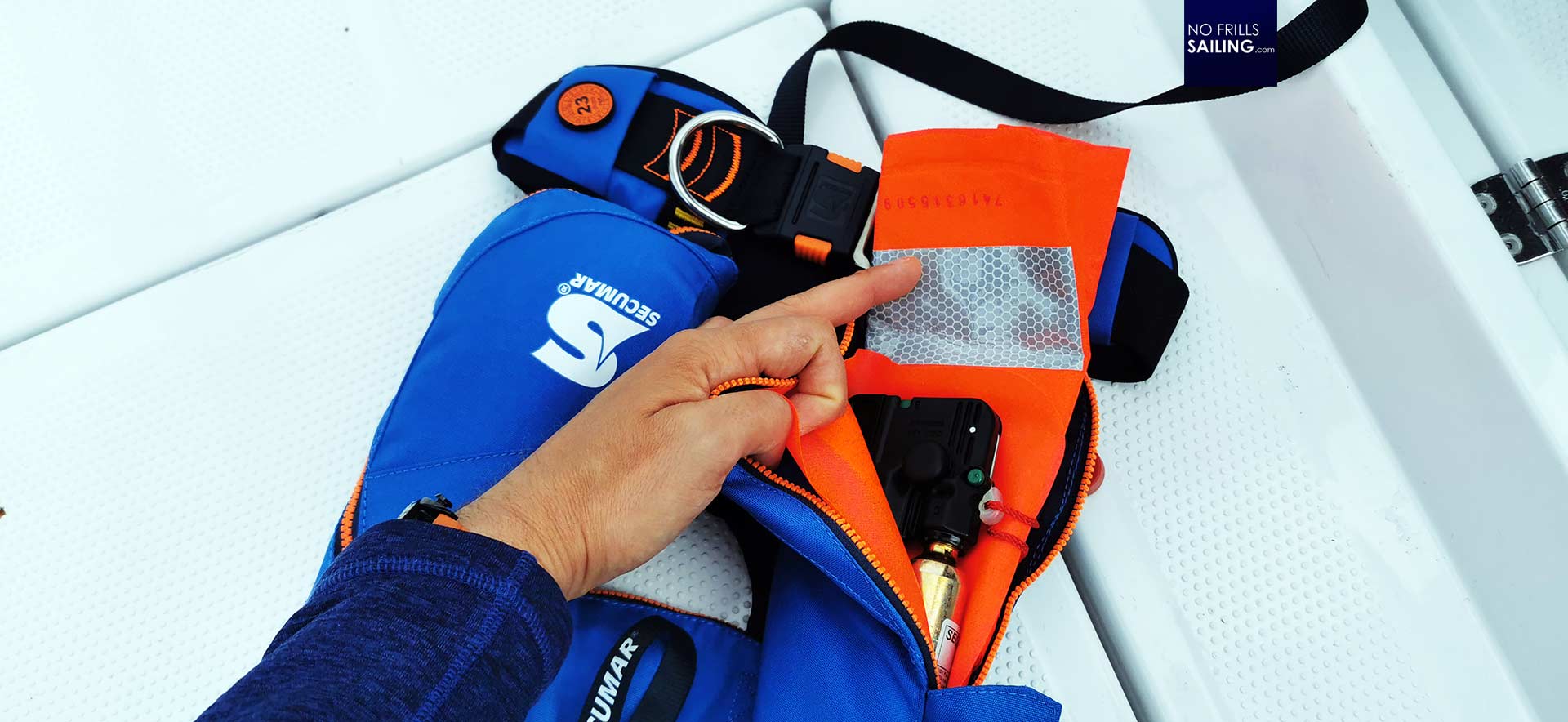
I unfolded a bit the floating body and showed them the releaser mechanism. Using the imaginary picture of toilet paper (which I told them is compressed to being a small and very hard tablet, preventing the trigger to penetrate the cartridge), I asked how toilet paper behaves when it gets wet. Both knew it: “It gets soft and dissolves!”, they shouted with one voice – immediately understanding how the automatic trigger works: “If we fall to the water, the tablet gets wet, a needle is hammered into the cartridge and the air is inflating the float.” Wide smiles – deep understanding. I hope that they understood now, how the life jacket works and why they should care for theirs, so that it can care for them.
Training Boatkids how to dress and check their Life Jacket
Step 2: Making the kids wearing the life jacket the right way. I hope that they understood the importance of this piece of equipment and their responsibility for keeping it in a good condition. Judging from their faces and the excitement of their vivid replies, it worked. “Does one of you know how to put it on?”, I asked and both knew, of course, as they have been aboard various boats with me sailing already. Nevertheless, there is a big difference between standard solid swimming vests they are used to up until now and these pro life jackets.
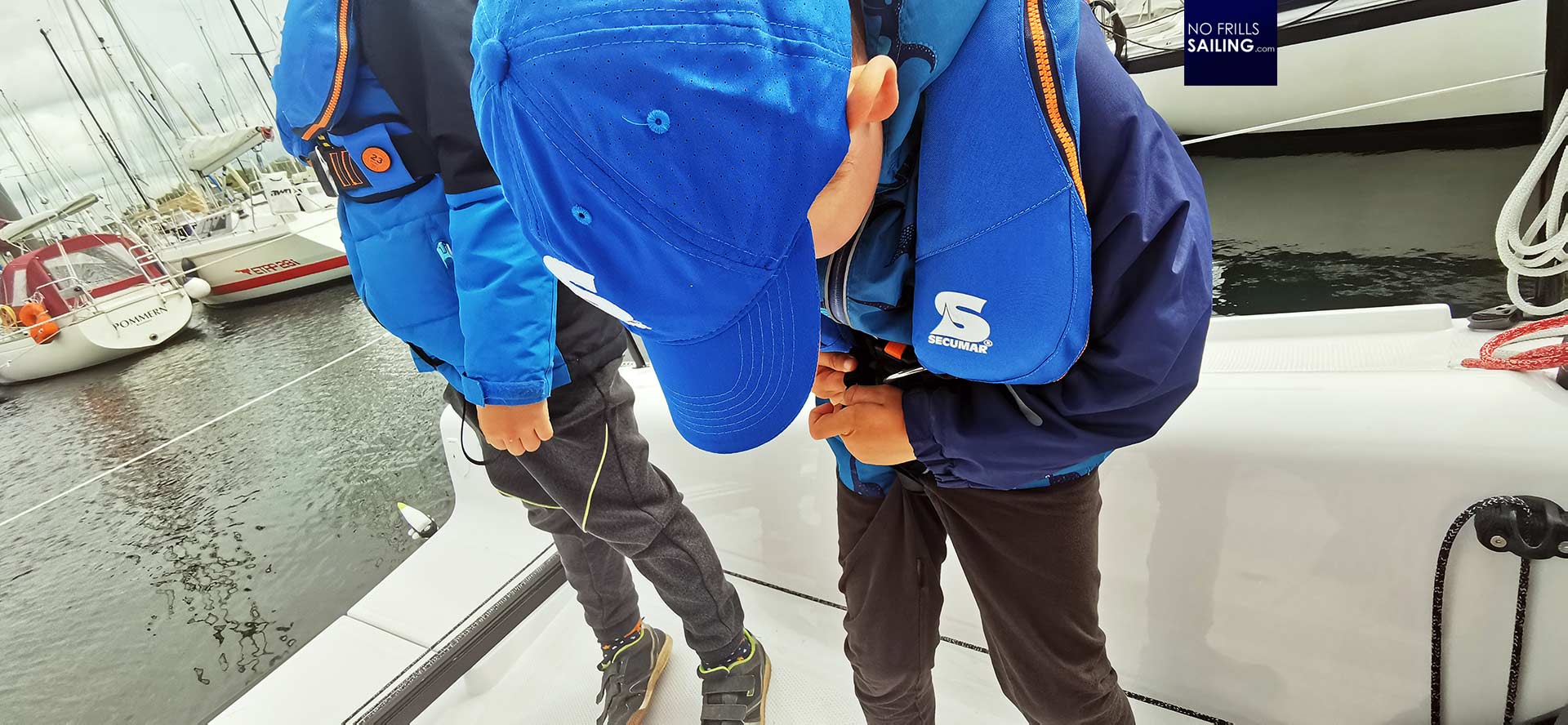
Both made me a proud father, as my older was able to put on his jacket as if he was an old salt boatkid already. He also, without any notion by myself, went on to help his younger brother. Exceptional to see that both intentionally and with full conscious attached the crotch strap as well, showing me that the previous sailing sessions and the lessons held before were fruitful. I helped them adjusting the straps and it worked just fine.
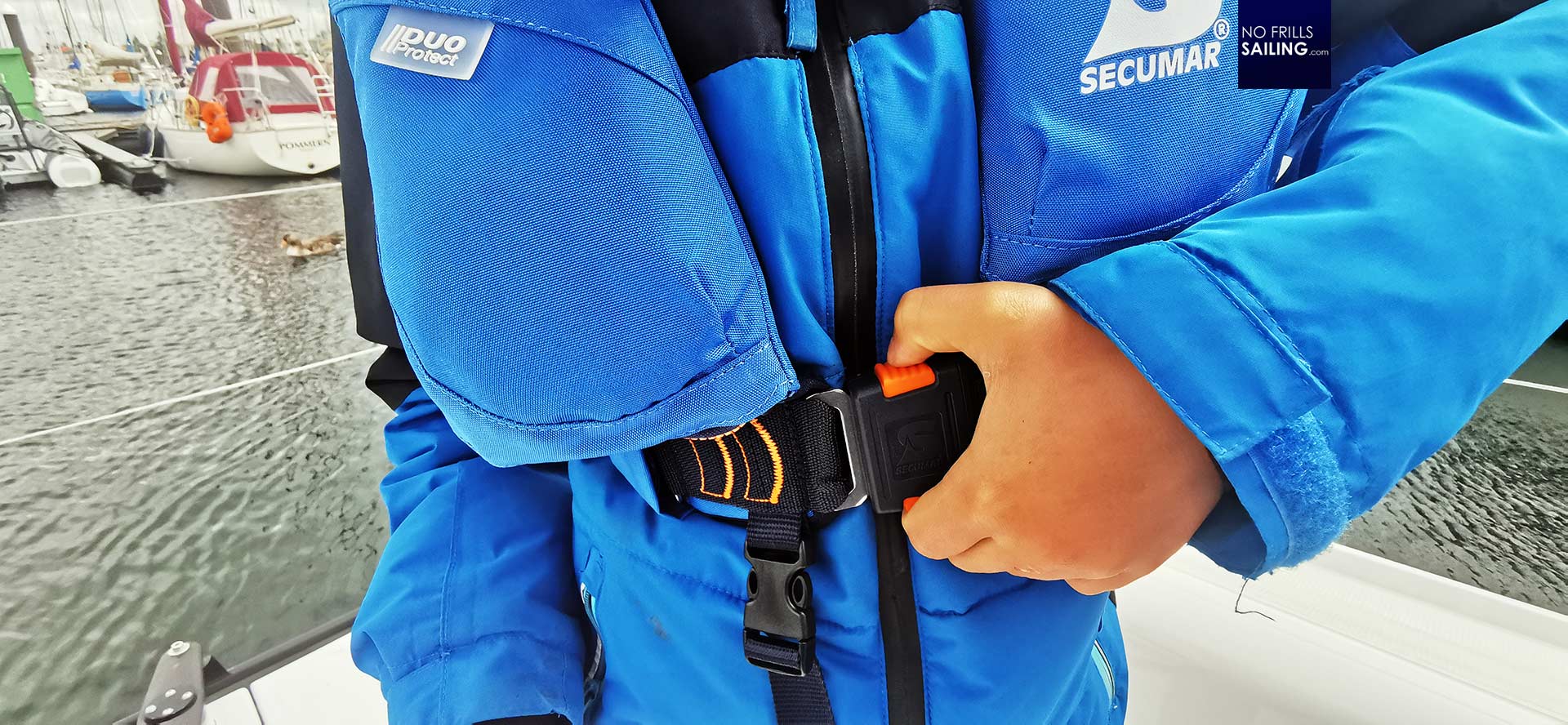
We tested numerous times to undress and dress again: I find it important that the kids take the responsibility for themselves by fitting the jackets. I think this makes them grow into the topic and raise awareness for safety. Both were absolutely gorgeous in their response: Keen to learn, happy about their latest gift and excited to being kind of equal with us grown-ups, now that their life jackets look like ours. It was both heart-warming and charming.
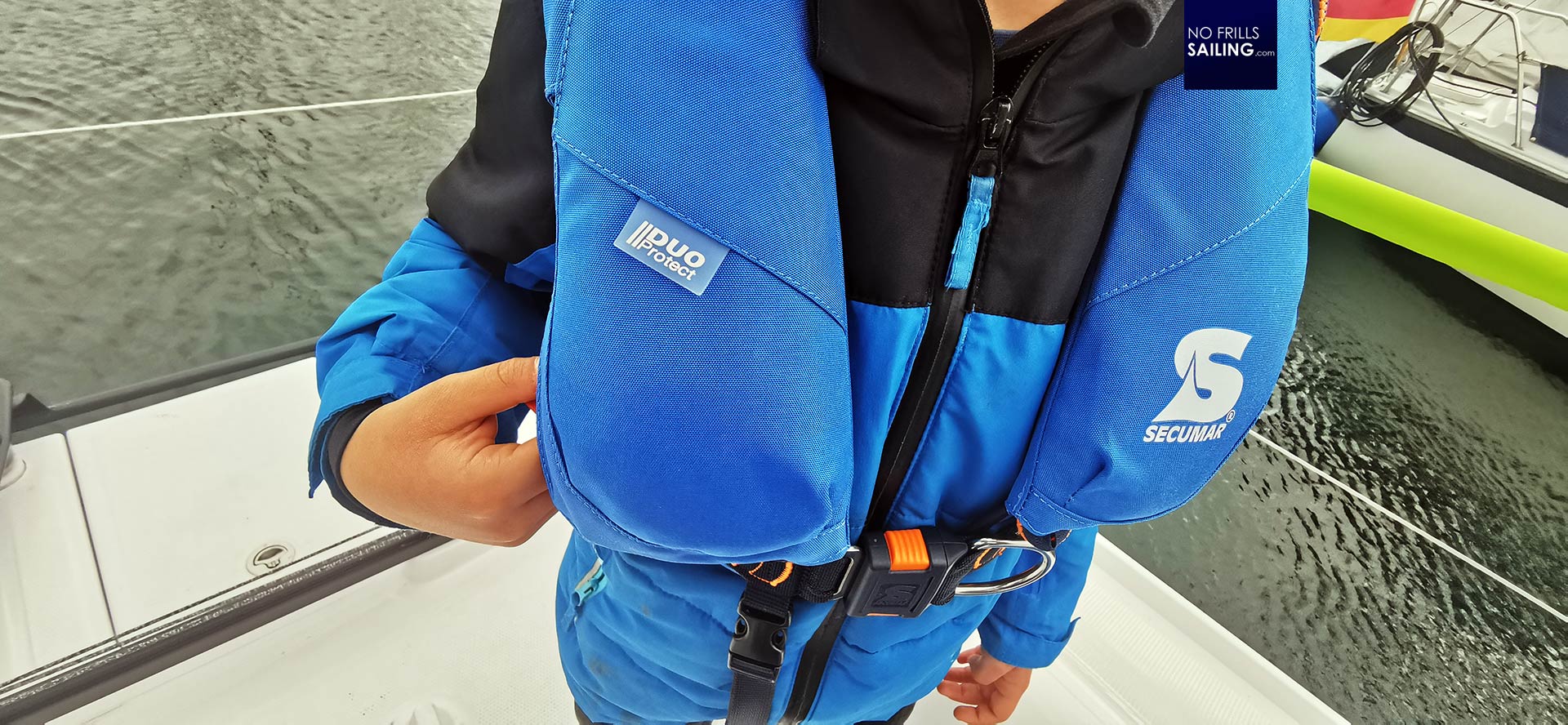
After clearing the how it works and the how to utilize, we have a short break (with chocolate) to sit out another rain shower whilst I switch on the electric heater and prepare myself a coffee. The boys take off their new life jackets down below and my older son, first grade, gets a permanent marker to write his name onto the back side of his life jacket before helping his younger brother to do the same with his vest. As we sit there and chat, I have a short recap on what we had learned so far. When the shower was over, we proceed outside into the cockpit again to have the second half of the briefing: The “what if something happens?”-session. By showing the boys the go- and no-go areas of the cockpit, I first determine a perimeter. As GEKKO is a racing boat in her DNA, she will surely be a quick sailboat with occasional heeling. I train my boys that, if outside, they should sit down to leeward near the companionway. But what if they happen to fall overboard? Well, the automatic trigger will do its work, I assure them – and promise that we will test this whilst at anchor when temps will get higher, combining the next level of safety briefing with a nice bathing-fun session. I also show them the manual trigger in case the vest does not inflate automatically – a form of last resort.
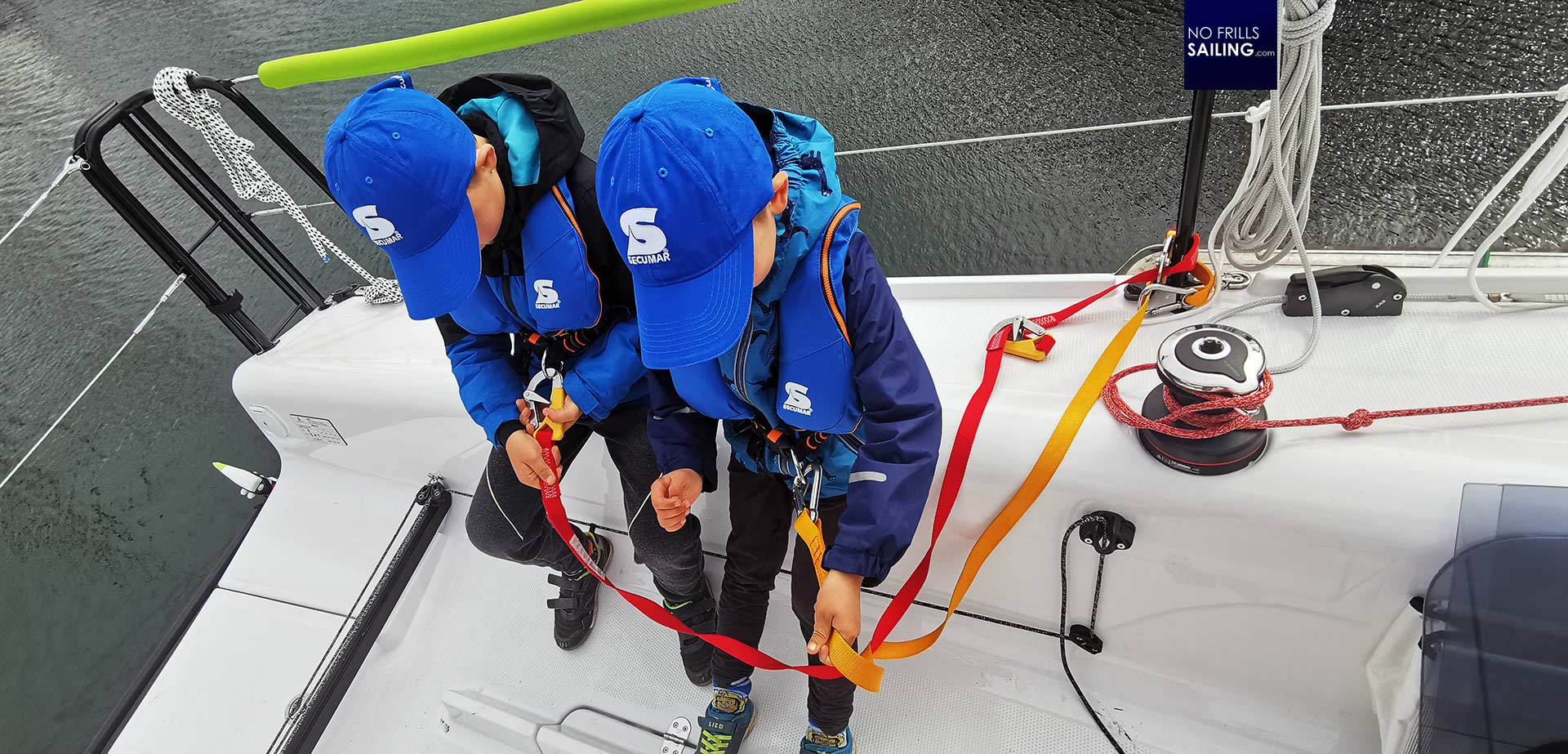
“But what can we do to prevent us from falling overboard?”, my son asks. Well, that is Daddy´s child! A bit proud and happy that they came up by themselves with asking for level 3 of this day´s lesson, I went down again and came up with some lifebelts. Attaching their jackets to the belts and the belts to the jackets I explained that every time we would be out at sea, that is going to be their basic safety setup: Life jacket plus lifebelt. They sat down, tried out comfortable positions and even walking along from one side to another. It worked so well.
Safety by Repetition and Routine
And here lies the secret, or let´s say, the core of my strategy of how to get my boys excited and prepared for sailing: Slow steps, working with their imagination, with stories and slowly but surely get them to practice more and more. It´s not the quick and hard dive into the sailing itself, it´s a slow process, step-by-step learning garnished with little gifts, little extras and much, much fun. By repetition and practice I try to replace the newly learned things with routine, encouraging the boys with little rewards and one little adventure at a time. For this day, trying out their brand new life jackets in between stormy rain showers, it was more than enough adventure.
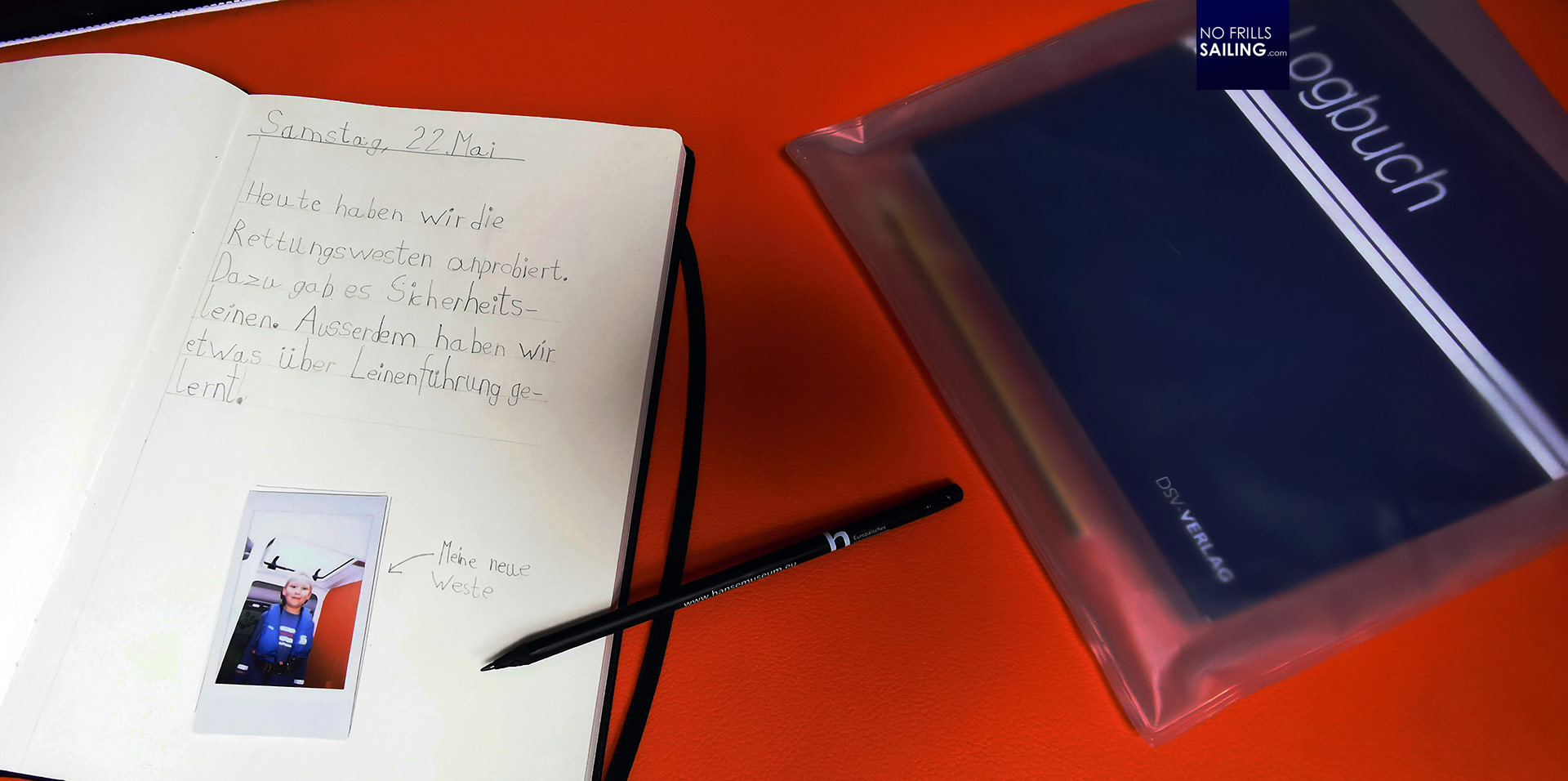
As my oldest son wrote in his new personal logbook for GEKKO: “We tried our new life jackets. And learned something about lines and ropes aboard.” But this is another story, building up soft skills and assigning small – but important – onboard duties even to the smallest crew members. For now they are laying in their beds, snuggling in their warm sheets and hopefully dreaming of the next adventure aboard GEKKO. What ever that may be, they know: Always wear a life jacket, always keep a life belt attached and one hand for the ship. Aye!
You might as well like to read:
All “Sailing with Children”-articles
A safety concept of a yacht
What happens if you go overboard?
